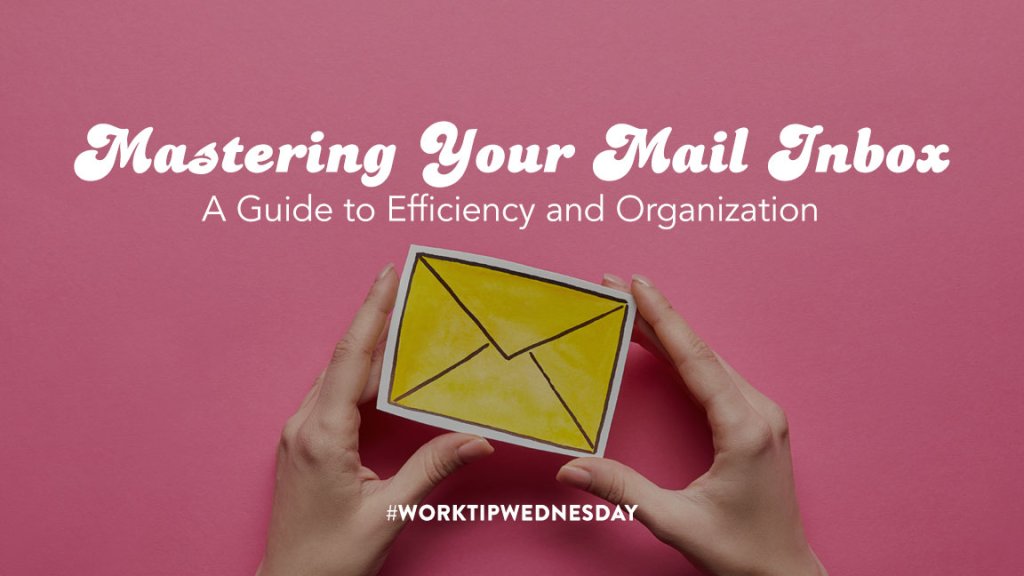
In today’s fast-paced world, email has become essential for personal and professional communication. However, the email inbox can quickly become overwhelming and chaotic without proper organization and management. Fortunately, there are strategies and techniques you can employ to regain control and maximize productivity. This guide will explore organizing your email inbox effectively, including utilizing folders and tags, maintaining inbox zero, implementing the 2-minute rule, and referencing the Eisenhower matrix.
1. Utilize Folders and Tags
Folders and tags are powerful tools for organizing your email inbox. They allow you to categorize and group similar emails together, making locating and managing messages easier.
- Create Folders: Create folders based on different categories or projects relevant to your work or personal life. For example, you might have folders for “Work Projects,” “Personal,” “Travel,” “Finance,” etc. Organize your emails into these folders to keep your inbox tidy and clutter-free.
- Use Tags or Labels: In addition to folders, many email clients offer the option to tag or label emails. Tags provide an extra layer of organization and can help you quickly identify the content of an email at a glance. Assign relevant tags to your emails based on their content or importance.
2. Maintain Inbox Zero
Inbox zero is a productivity philosophy that involves always keeping your inbox empty or close to empty. While achieving zero emails in your inbox may not always be feasible, the goal is to process and respond to emails promptly to prevent them from piling up.
- Set aside dedicated time: Schedule specific times throughout the day to check and process your emails. Aim to respond to or take action on emails as soon as you read them rather than letting them linger in your inbox.
- Use the “4 D’s” method: When going through your emails, apply the “4 D’s” method: Delete, Delegate, Do, Defer. Delete unnecessary emails, delegate tasks to others if possible, respond to emails that require immediate action, and defer emails that can be addressed later by flagging or moving them to a designated folder.
3. Implement the 2-Minute Rule
The 2-minute rule is a productivity principle popularized by productivity expert David Allen in his book “Getting Things Done.” It states that if a task can be completed in two minutes or less, you should do it immediately rather than deferring it for later.
- Apply to email management: When processing your emails, prioritize tasks that can be completed quickly. If you can respond to an email, file it away, or take any other necessary action in two minutes or less, do it immediately. This helps prevent small tasks from accumulating and bogging down your inbox.
4. Reference the Eisenhower Matrix
The Eisenhower Matrix, also known as the Urgent-Important Matrix, is a decision-making framework that helps prioritize tasks based on urgency and importance. It consists of four quadrants:
- Quadrant 1: Urgent and Important: Tasks in this quadrant require immediate attention and should be dealt with promptly. Respond to urgent emails or take necessary actions to address critical issues.
- Quadrant 2: Important but Not Urgent: Tasks in this quadrant are important but not time-sensitive. Allocate time to tackle these tasks efficiently, such as planning future projects, organizing your inbox, or setting up filters and rules to automate email management.
- Quadrant 3: Urgent but Not Important: Tasks in this quadrant may seem urgent but are not crucial to your long-term goals or priorities. Delegate or minimize time spent on these tasks, such as responding to non-essential emails or attending unnecessary meetings.
- Quadrant 4: Not Urgent and Not Important: Tasks in this quadrant are neither urgent nor important. Minimize or eliminate these tasks to free up time for more meaningful and productive activities.
By referencing the Eisenhower Matrix, you can make informed decisions about prioritizing and allocating your time when managing your email inbox, ensuring that you focus on tasks that align with your goals and objectives.
Mastering your email inbox requires a combination of organization, discipline, and strategic decision-making. By utilizing folders and tags, maintaining inbox zero, implementing the 2-minute rule, and referencing the Eisenhower Matrix, you can streamline your email management process, increase productivity, and regain control over your digital communication. With consistent practice and adherence to these principles, you’ll spend less time on email and more time on tasks that truly matter.
